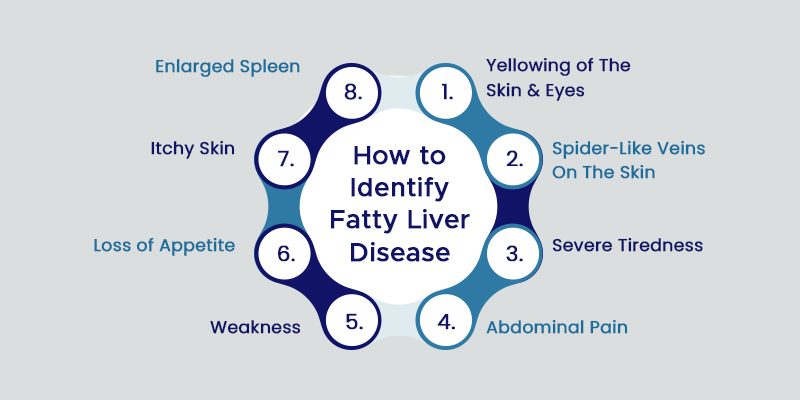- 7th Oct, 2024
- Fatty Liver
Four Key Stages Of Fatty Liver Disease
Our body needs an adequate intake of fat to perform essential functions like energy production, nutrient absorption, supporting cell growth and maintaining overall health. However, excessive accumulation of fat, especially in the liver is not only a symptom of metabolic syndrome but also an indicator of lipid overdose. If the buildup of fat in the liver is more than 10% of the liver’s weight, the individual is said to have fatty liver disease, which is the leading cause of potential health complications.
Researchers have still not established the exact cause of this condition. However, whatever cases have been reported till now showed that it resulted from obesity, poor diet, genetic disorders and certain medicines.
Fatty liver disease has become a global health issue. Nearly one out of 10 people have this condition. In addition to knowing the symptoms, it is also important to understand the various stages of fatty liver disease, which indicate the severity of the fat deposition and related inflammation of the liver cells.
4 Stages Of Fatty Liver Disease
Dr. Indrannel Saha, a fatty liver doctor explained the key stages of fatty liver disease and its types.
- Simple fatty liver (steatosis): This is the earliest stage where there is an accumulation of fat in the liver without any significant inflammation or damage in the tissues. Patients with obesity and diabetes usually have this type of fatty liver disease which is usually present with no such symptoms.
- Non-Alcoholic Steatohepatitis (NASH): As the disease progresses, it reaches the second stage, which is accompanied by inflammation and damage besides excessive buildup of fat. Here, the common symptoms present are fatigue, loss of appetite, upper right abdominal pain and jaundice. If not treated at the right time, it leads to other severe complications like scarring.
- Fibrosis: As the inflammation continues in the liver cells, the healthy tissues are replaced with scar tissues ranging from mild to moderate. Treatment at this stage is of utmost importance as there is an increased risk of advanced liver disease, which can’t be curable.
- Cirrhosis: This is the advanced stage of fatty liver disease where the organ becomes completely damaged. The tissues become lethal and the organ loses its ability to function properly. Treatment also becomes quite difficult because the scar tissue is not that easy to remove; however, the progression is possible to halt if the cause is unidentified. Cirrhosis greatly increases the risk of liver cancer and liver failure.
How To Identify Fatty Liver Disease
Individuals usually do not have any symptoms in the initial stage of fatty liver disease. However, they may experience the following:
- Yellowing of the skin and eyes
- Spider-like veins on the skin
- Severe tiredness
- Abdominal pain
- Weakness
- Loss of appetite
- Itchy skin
- Enlarged spleen
Remember that these symptoms can indicate other conditions as well. Hence, whenever you experience these signs, make sure to consult a fatty liver doctor. You will be recommended blood tests or a biopsy to find out if it’s fatty liver disease and the actual cause behind it.

Risk Factors Of Fatty Liver Disease
You are more likely to have fatty liver disease if you fall under the following categories:
- An unhealthy BMI
- Have type 2 diabetes.
- Have metabolic syndrome like
- Family medical history
- Excessive consumption of alcohol
- Poor eating habits
- Infections such as Hepatitis C
Conclusion
Management or prevention of fatty liver disease involves adopting a healthy lifestyle. If you are at risk of developing inflammation or scarring, you can get in touch with Dr. Indraneel Saha, a fatty liver doctor who will focus on managing the cause and improving your liver health.